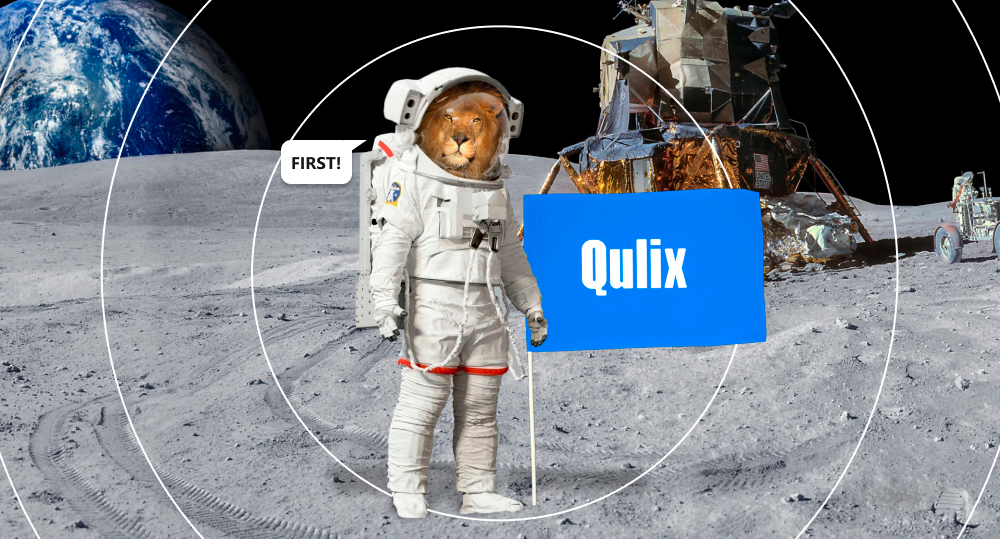If fintech product development were a parent, it could be a proud one: neobanks, its children that first saw the light became known in the early 2010s, today are among the most famous stars of the IT universe. There are over 200 neobanks worldwide, but the hunger for more will always be a part of the IT game.
However, with so many fintech companies out there already, starting your own neobank might be hard. You need to strike the perfect balance between being unique and crafting a quality product.
But how can you launch a successful fintech product and snatch your share in the fintech industry as a neobank? Let’s find out together.
written by:
Alexander Arabey
Director of Business Development
Contents
Financial Technologies: Types and Current Trends
Fintech emerged as a response to the customers' need for financial services to be more accessible and easier to use. However, just because there are fintech apps that empower us to make digital payments and manage insurance online, it doesn't mean there's no room for improvement. Consumer expectations continuously grow in height and width, and the fintech space expands accordingly, ready to accommodate new bright constellations that we know as fintech solutions.
Today, the fintech industry (there are about 30,000 fintech startups worldwide) is represented by apps that fall into the following categories:
- Banking services;
- Lending and mortgage services;
- Cryptocurrency;
- RegTech;
- Investment;
- Insurance;
- Personal finance;
- Crowdfunding.
We are a software house that provides outsourcing services, consequently, we craft solutions for various businesses. Nevertheless, the financial domain is a specialty of ours: 80% of our projects lie in fintech product development (the industry reached approx. $179 billion in 2022 and is predicted to reach $213 billion by 2024), with digital banking comprising an area of our particular expertise. Thus, it is only natural that we keep an eye on the ever-evolving fintech industry. Close monitoring of the dynamics blossoming in the garden of financial technology companies led us to conclude that the 3 most promising trends in fintech in 2024 are:
- Neobanks;
- Cryptocurrencies;
- Investments.
While all three trends shine brightly on the stage of the financial services industry, cryptocurrencies and investments remain those financial domains that are quite challenging to manage all by yourself. Consequently, they are not that widespread. According to the statistics from TripleA, “global crypto ownership rates at an average of 4.2%, with over 320 million crypto users worldwide.”
The situation in investments is similar: although half of the adult American population has assets to invest, the majority still uses broker services and manages their finances via phone. The usage of apps that allow you to keep track of the stock market and make investment decisions by yourself is some sort of novelty for the masses. However, for digital banks, everything is different.
It is difficult to imagine modern daily life without online banking. Moreover, it has transformed the finance industry itself to the degree where it's utterly odd if an organization either doesn't have a solid online presence or doesn't provide at least the most popular banking services online. And the demand for online banking will only continue to grow. In the US alone, the number of digital banking users is going to reach 217 million by 2025 (Statista).
As we mentioned above, fintech development is the area of our company’s expertise, and digital banks are our specialty. Currently, 20+ banks use the software we developed, and, of course, we're far from being done. Considering this and how popular each of the 3 trends among regular consumers is, we recommend building a neobank.
That said, let’s take a closer look at the approach you need to take to craft a neobank, and what this fintech app should consist of.
Niche Neobanks in the Fintech Services Industry
Let's start this conversation with the definition of a neobank.
Neobanks are financial institutions that operate exclusively online with a focus on innovative technology. Unlike traditional banks, they rarely own a banking license. This means they offer a limited number of services (this number varies from neobank to neobank) that regular banks invented and naturally provide.
Neobanks do not have a physical presence and function only digitally (through mobile and web apps) using a low-cost structure. Thus, they charge much lower fees than traditional banks, which attracts many customers.
Gradually moving on to the possibilities that neobanks provide, we'd like to note that essentially, all fintech apps, in all categories, offer a set of financial services that don’t differ that much. Nevertheless, when it comes to developing products, the eyes of creators are frequently fixed on the intricacies of software development and technology stack. One other thing that also steals a lot of attention is the need to decide what innovative technologies to implement in a fintech app. And such focus on the tech at the first stages of business development is a very common and, oftentimes, fatal mistake.
As a software development house working closely with many fintech companies, we know for a fact that everything revolves around the people who are going to use your app. Launching a generic neobank without understanding who it's for will make it difficult for you to compete in the market. Why? If you don't know your audience, you will not know what unique solutions you can offer. On top of that, as we mentioned, there are over 200 neobanks on the market at the moment. This means that customers are already acquainted with other fintech solutions and might be clients of an existing neobank. So, you need to win them over and/or build your own audience from those who are not involved yet.
In other words, to build a fintech app, you should first answer 3 questions:
- Who are your potential customers?
- What are the customer expectations?
- How can you deliver what your target audience wants?
With neobanks, you have an advantage when answering these questions: the number of people who use digital banking, in general, is beyond impressive, as we've figured out above. Thus, you have a much wider range of consumers to choose your target audience from. There's also plenty of space and opportunities to conduct research on the said audience and the market.
The research will allow you to find out what unique financial services you specifically can offer. After all, your fintech app doesn't need to have a lot of functionalities. You can implement only the key features and spice it up with your custom offer. The main thing here is to find your niche and create a niche neobank that's going to serve that specific niche in the best possible way, i.e., provide it with things nobody else can offer. And, of course, then you should build your marketing strategy accordingly. As an outsourcing company, we understand that marketing should come first, and technology will follow. You have to know your target audience and why these people are likely to prefer your project over its competitors. User acquisition plays a major role here.
Now, we would like to share with you a few examples of neobanks. Each of these companies launched a successful fintech app and targeted a very narrow group of customers.
Neobank
Target Audience
Offers
Nerve
Musicians
Customers get a business debit and savings account and can send instant payments to other Nerve users for free. It also serves as a private networking tool.
W1TTY
Gen Z
Provides tools, products, and education that help their consumers manage their financial lives in a customized way.
Fundof
Digital Content Producers
Allows to receive a Fundof Visa debit card for free and get immediate access to every donation creators receive with no extra fees or setbacks caused by bank transfers.
Majority
Migrants
Offers international money transfers without added fees, good calling rates, and support in your native language.
Now that we've talked about the importance of niche, let's take a look at what features fintech companies can implement in their neobanks.
Key Features and Innovative Technologies for Neobanks
Any neobank should include a ”gentleman set” of key features that will make its functionality possible: an ability to view information about products, manage them, get account statements, make payments and money transfers. However, there are other features that are often forgotten. These features allow increasing security of your neobank, provide your consumers with education on personal finance management, and create an experience that's smooth and seamless:
- Voice recognition and other biometrics;
- Personal finance management;
- ATM integration into the omnichannel system;
- Online chat;
- Chatbots.
The area of specific attention here is personal finance management. Why does it attract so many curious eyes and bright minds? That’s because of the direction where its potential might lead us — the direction of context advisory.
Essentially, the goal of a neobank is to be proactive and make a user’s life more comfortable. To achieve that, the experience it provides shouldn’t be just fully online, it also has to be hyperpersonalized. This means that neobanks should use more artificial intelligence and machine learning. Why? These innovative technologies have the power to analyze big data, create client profiles, match them, and, based on analytics, make predictions of various scenarios of user behavior.
Neobanks can provide education on personal finance management (through knowledge bases or virtual assistants), make suggestions on banking products that would fit customers' needs better, and make personalized shopping offers based on a user's browsing history. The more integrations with third-party apps neobanks implement, the more aspects of their consumers’ lives they can analyze and improve. Thus, customer interaction with finances has the potential to become as seamless as a one-piece fabric. This means that, eventually, it will not be the user who has to think about what can be done finance-wise, but the app that thinks for them.
As a fintech product manager, you should be able to utilize the potential that hyperpersonalization of your neobank holds and win over the hearts of potential consumers.
Who to Hire If You Want to Start a Neobank
We recommend partnering up with third-party service providers. Many businesses choose to involve their in-house team to develop fintech applications. However, it's not always the best course of action for new technology. First, recruiting and onboarding team members are time-consuming and expensive processes. Second, fintech products, like all other products, have their own peculiarities. Thus, it's sound for businesses to reach out to outsourcing companies that have a vast experience in the industry and a high level of expertise. Such teams can do all the work on their own, while you can focus on core business activities. Hiring a dedicated team to develop your neobank will speed up the process, help eliminate any risks related to meeting deadlines, and make sure your delivery to the market is fast. You can learn more about how to hire developers for your startup on our blog.
There are also a few things we'd like to highlight as vital when contemplating who's going to build your neobank app:
- Your app must have a well-designed architecture (it's best when developers use an available basis rather than implement from scratch or reinvent the wheel);
- Technology should be prioritized: services management, deployments, implementation of changes at different layers, etc. The platform must be technically focused, not functionally.
- The platform must have open source code (no vendor lock-in) and the tech stack that's commonly used (e.g., Java + React).
- Your app also should provide the space for the implementation of integrations, access control, notification management, omnichannel processes, etc.
Needless to say, outsourcing companies that craft products for financial institutions will know exactly how to abide by these rules and understand why they matter.
Neobank Development Guide: 4 Stages to Launch Your Fintech Company
Now you know what your focus should be if you wish to challenge other financial institutions. Thus, we invite you to have a bigger bite of our expertise and see what stages you need to go through to build a neobank.
Stage 1. Analysis & Design
At this first stage, you have to decide what the concept of your neobank is going to be. For this, as we've discussed above, you need to do research on the finance industry and other neobanks, find your target audience, and come up with a unique offer. After that, you can start bank negotiations, because as a neobank, you will need to use banking services. This is a vital step because, in the finance industry, there are regulatory authorities that exercise strict control over the work of such organizations. If you do not abide by the law, your neobank might be at risk of closing even before its launch.
So, how can you establish the basis for your neobank?
- Custom installation/integration of different related IT components + licensing (getting a banking license or a PSP license);
- Agreement with an existing bank (partner) to utilize its financial infrastructure and license;
- Integration with some well-known banking providers on the market (Plaid, Stripe, etc.).
From our experience, partnering up with an existing bank and using their back-end IT layer (core, processing, KYC, etc.) and PSD2 compliance would be the quickest and most convenient way to go.
After that, you can proceed to the definition of business processes, UI/UX design, and integration map development. Your checklist may look like this:
- Understand the general operating costs (lawyers, accountants, taxes) and the relevant budget at hand;
- Estimate budget for product development (this will involve hosting via the cloud, software subscription fees such as core, card processing, and CRM, maintenance team, solution development team, and user acquisition expenses);
- Create a developed scheme of components (integrations) for your app (which we discussed earlier in the “Key Features and Innovative Technologies for Neobanks” section of the article).
- Decide on the team (usually, it includes a product manager, a system analyst, a technical lead, a UI/UX designer, a DevOps engineer, a chief security officer, and a lawyer; a project manager is an optional role that can be executed by a product manager or a dedicated person).
As to UI/UX design, we wouldn't recommend focusing too much attention on this part, as this process might take a huge chunk of your highly valuable time. If you want to release your neobank on the market ASAP, it's best to focus on marketing and technology.
Last but not least, during the first stage, you need to create an MVP scope description. A minimum viable product, or MVP, is a product that helps you understand what minimum set of features your app should have to draw the attention of early adopters (i.e., features to make it work), and what additional features can be implemented later on. In short, the MVP shows if your idea is going to work out quite early in the product development cycle. Therefore, the quicker you learn what has to be improved, the quicker you can fix that and launch a proper product on the market. The MVP is also a highly valuable source of information for your neobanks' stakeholders.
We would like to finish the description of this stage by noticing that it's best to build a mobile app first rather than a web application or both at the same time. The reason for that is simple: most people use banking from their phones. Later on, when you ensure that your neobank is working the way you planned, you can expand the number of platforms for your fintech product.
Stage 2. PoC Implementation
In the next stage, you need to create a Proof of Concept (PoC). The goal of a PoC is to check if the functions critical for your app can actually be implemented. Unlike the MVP, the PoC is a tiny project that's created before the full-fledged process of product development begins.
We recommend implementing 1–2 vertical scenarios involving all layers (including those from the bank partner). For example, test out this combination: user login + getting info about their products + getting info about some of the products (e.g., cards).
Stage 3. MVP Implementation
This stage is vital, however, we've noticed that it is often neglected because clients wish to launch the app with all of its features, both critical and additional. However, market feedback is key to making sure the app is going to perform well. It also helps lower the risks, save money on product development and attract investors. So, implement the remaining functionality from the MVP scope and test the app in the pre-production sandbox. Read the reviews of your first customers and make appropriate adjustments.
Examples of a high-level MVP:
- KYC and new user registration/onboarding;
- Card order/delivery;
- My products (accounts/cards, etc.);
- Statements/transaction history;
- Transfers (between products, C2C, C2A);
- Utility payments.
Stage 4. Roll Out
Finally, you're launching the product! Here, you should submit your neobank app for reviews on relevant websites, come up with a release plan, and monitor progress by gathering feedback.
Then, business as usual: think about how you can optimize your neobank, fix bugs, provide customer support, and improve your marketing and outreach plans.
Cashback for Your Thoughts
There's been a mindset switch in the definition of a bank. Banks stopped being big and expensive financial institutions. Instead, they transformed into financial organizations that provide niche services, and it works.
When we raise the topic of neobanks, we don't talk so much about the number of features that our fintech product can offer. The conversation about developing a neobank builds around two ideas. The first idea is how your specific fintech company is going to fit into someone's life. The second one is how your business will automate financial services for those people to make their financial narrative seamless. And the development of your product with that unique approach to your customers' needs and attention to quality technology is both the goal and the challenge.
The challenge, that we hope our guide will help you overcome.
If you have any questions about neobanks or fintech product development, please feel free to contact us. We'll be happy to share our insights and build a successful fintech product with you.

Contacts
Feel free to get in touch with us! Use this contact form for an ASAP response.
Call us at +44 151 528 8015
E-mail us at request@qulix.com













